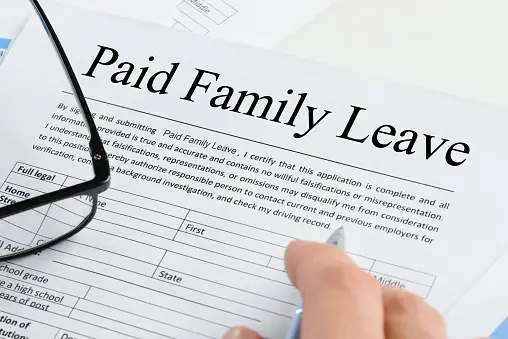Welcome to the world of employee benefits and workplace policies! In this article, we’ll unravel the intricacies of the Family and Medical Leave Act (FMLA) – a vital component of the professional landscape. Whether you’re a seasoned HR professional, a curious employee, or just someone navigating the complexities of workplace rights, join us as we delve into the ins and outs of FMLA, demystifying its significance and impact on both employers and staff.
What Is FMLA?
The Family and Medical Leave Act (FMLA) stands as a cornerstone in the realm of employment law, fundamentally altering the dynamics of the employer-employee relationship. Since its enactment in 1993, the FMLA has been pivotal in fostering a harmonious balance between work responsibilities and the profound personal and family-related events that punctuate our lives.
At its core, FMLA extends a protective umbrella over eligible employees, offering job security and the right to take up to 12 weeks of unpaid leave within a 12-month period. The reasons for this leave can encompass a spectrum of family and medical situations, including but not limited to the birth or adoption of a child, the onset of a serious health condition affecting the employee or an immediate family member, or the demands of military family leave.

Understanding The Concept Of FMLA
Delving deeper into the intricacies of FMLA necessitates an exploration of eligibility criteria. To qualify, an employee must have completed at least 12 months of service with their employer, accumulated a minimum of 1,250 hours of service over the preceding 12 months, and be employed at a location where the company has 50 or more employees within a 75-mile radius.
A hallmark feature of FMLA is its recognition of the unpredictable nature of life’s challenges. Intermittent leave allows eligible employees to take leave in separate, manageable blocks of time. This flexibility is instrumental in navigating recurring medical appointments or family exigencies without compromising job security.

In the realm of benefits, FMLA mandates that employers maintain an employee’s health benefits during their leave period, ensuring continuity and support during challenging times. Equally significant is the provision requiring employers to reinstate employees to the same or an equivalent position upon their return from FMLA leave, safeguarding their professional standing within the organization.
Yet, FMLA extends beyond merely facilitating leave; it encompasses a broader commitment to nondiscrimination. Employers are explicitly prohibited from interfering with an employee’s exercise of FMLA rights, and taking leave under FMLA should not result in adverse consequences for the employee. This anti-retaliation provision serves as a deterrent, fostering an environment where employees feel secure in utilizing their FMLA rights without fear of reprisal.
Benefits Of FMLA
1. Job Security and Stability:
– FMLA provides a crucial safety net, ensuring that eligible employees can take up to 12 weeks of unpaid leave without the fear of job loss.
– The stability offered by FMLA encourages employees to address personal and family health needs without compromising their career trajectory.
2. Health and Well-being Prioritization:
– By granting individuals the opportunity to take leave for personal health concerns, FMLA empowers employees to prioritize their well-being.
– Whether recovering from a serious illness, managing a chronic condition, or navigating the joys of welcoming a new family member, employees can focus on these significant life events without the stress of work obligations.
3. Family-Centric Support:
– Recognizing the importance of family, FMLA permits eligible employees to take time off to care for a spouse, child, or parent facing a serious health condition.
– This family-centric support not only contributes to the well-being of the employee but also strengthens familial bonds and promotes a compassionate workplace culture.

4. Stress Reduction and Mental Health:
– Offering FMLA alleviates stress for employees dealing with personal challenges, contributing positively to mental health.
– The provision of time off without the fear of repercussions allows individuals to focus on resolving personal matters, ultimately fostering a healthier work-life balance.
5. Employee Retention and Loyalty:
– Companies embracing FMLA often experience higher levels of employee retention. The assurance of a supportive leave structure fosters loyalty among staff.
– When employees feel valued and supported during critical life events, they are more likely to stay committed to their current employer.
6. Increased Productivity and Renewed Focus:
– Contrary to concerns about productivity, employees who take advantage of FMLA often return to work with renewed focus and dedication.
– Adequate time away to address personal matters can lead to improved overall productivity as employees return with a fresh perspective and reduced personal stress.
7. Legal Compliance and Risk Mitigation:
– Implementing FMLA ensures that employers remain compliant with federal regulations.
– This legal adherence not only protects employees but also shields companies from potential legal issues related to employee leave, mitigating risks and promoting a secure work environment.
8. Enhanced Workplace Morale and Engagement:
– A workplace that actively supports the personal lives of its employees fosters positive morale.
– Employees who feel supported and valued are more likely to be engaged, contributing to a motivated and cohesive workforce.
In essence, the benefits of FMLA extend far beyond the surface, creating a robust framework that supports individual employees, enriches workplace culture, and ultimately contributes to the overall success and sustainability of organizations.

How Does FMLA Work?: Employers Vs Employees
Understanding how the Family and Medical Leave Act (FMLA) functions is crucial for both employers and employees. Let’s break down the workings of FMLA for each party:
Employers:
1. Eligibility Determination:
– Employers play a crucial role in assessing employee eligibility for FMLA. This involves considering factors such as the duration of employment (at least 12 months) and the accumulation of a minimum of 1,250 work hours in the preceding 12 months.
2. Notification and Documentation:
– Communication is key. Employers are obligated to notify eligible employees about their FMLA rights and responsibilities. This includes providing information on how to request leave and the importance of timely communication.
– Documentation is a vital aspect of FMLA administration. Employers may request medical certifications for serious health conditions, ensuring that leave is taken for legitimate reasons.
3. Job Protection:
– Job security is a cornerstone of FMLA. Employers must guarantee that employees on FMLA leave will be reinstated to the same or an equivalent position upon their return. This includes maintaining equivalent pay, benefits, and other employment terms.
4. Continuation of Benefits:
– During FMLA leave, employers typically continue health insurance benefits for the employee. Employers must communicate any changes in benefit contributions or coverage during the leave period to ensure transparency.
5. Intermittent Leave Management:
– FMLA allows for intermittent leave in certain situations. Employers need to establish clear communication channels to manage intermittent leave effectively. This involves coordinating with the employee to minimize disruption to business operations.

6. Record-Keeping Compliance:
– Employers are required to maintain accurate records of FMLA leave, including dates and reasons for leave. Maintaining meticulous records ensures compliance with legal regulations and provides a reference in case of disputes.
Employees:
1. Requesting FMLA Leave:
– Employees must adhere to the process of requesting FMLA leave, which often involves providing advance notice for foreseeable leave. Communication is key to ensuring a smooth process.
2. Providing Adequate Documentation:
– In situations requiring medical certifications, employees must provide adequate documentation to support their need for the leave. Understanding the documentation requirements is crucial for a successful leave application.
3. Understanding Leave Entitlement:
– Employees need to comprehend their entitlement under FMLA. The act provides up to 12 weeks of unpaid leave in a 12-month period for eligible employees. Knowing these limits helps employees plan their leave effectively.
4. Coordinating Leave with Employer Policies:
– Understanding how FMLA interacts with other employer policies, such as paid time off and sick leave, is essential for employees. Proper coordination ensures a seamless transition between different types of leave and maximizes benefits.
5. Communication During Leave:
– Maintaining open communication with employers during the leave period is beneficial. Employees should provide updates on their status and notify employers promptly of any changes in the expected duration of their leave.
6. Return-to-Work Transition:
– As the end of the leave approaches, employees should communicate their return-to-work plans with their employers. This proactive approach assists in planning and ensures a smooth transition back to regular work responsibilities.
By embracing these comprehensive practices, both employers and employees can navigate the process with clarity and cooperation, fostering a workplace environment that prioritizes employee well-being while upholding legal and operational standards.
How do employers ensure FMLA compliance?
Employers play a vital role in FMLA compliance by determining eligibility, providing notification and documentation, ensuring job protection, maintaining benefits during leave, managing intermittent leave effectively, and maintaining accurate records of FMLA leave.
What role does documentation play in the FMLA process?
Documentation is crucial for FMLA administration. Employers may request medical certifications for serious health conditions, ensuring that leave is taken for legitimate reasons. Accurate records of FMLA leave dates and reasons must also be maintained.
Can employees coordinate FMLA leave with other employer policies?
Yes, employees should understand how FMLA interacts with other employer policies, such as paid time off and sick leave. Proper coordination ensures a seamless transition between different types of leave and maximizes benefits.
How does FMLA impact an employee’s return to work?
FMLA mandates that employees be reinstated to the same or an equivalent position upon their return. Maintaining open communication, providing updates on their status, and planning a smooth return-to-work transition are essential steps for employees.
Is there protection against retaliation for taking FMLA leave?
Yes, FMLA includes an anti-retaliation provision. Employers are explicitly prohibited from interfering with an employee’s exercise of FMLA rights, ensuring that taking leave under FMLA does not result in adverse consequences for the employee.
Other Related Articles:
- FMLA vs. Other Leave Options: Making Informed Workforce Decisions
- Demystifying FMLA: A Comprehensive Guide for Employees and Employers
- Drug Testing In the Workplace: Texas Regulations
- A Blog Post for Those Facing Mental Health Problems During a Divorce
Oluwatukesi Joseph is a Content Writer at LOBF. He holds a Master’s Degree from Obafemi Awolowo University in Architecture, However, his love for writing and content creation has transitioned him into the writing and content marketing field. He has gained relevant certification from other notable Universities where he developed a strong foundation in content marketing and writing.
Outside of work, Joseph enjoys spending quality time with friends and family and playing chess, which he finds often complements his professional pursuits. Joseph is excited to be part of the dynamic team at The Law Office of Bryan Fagan, contributing his expertise to spreading the good news of LOBF to Families across Texas.




